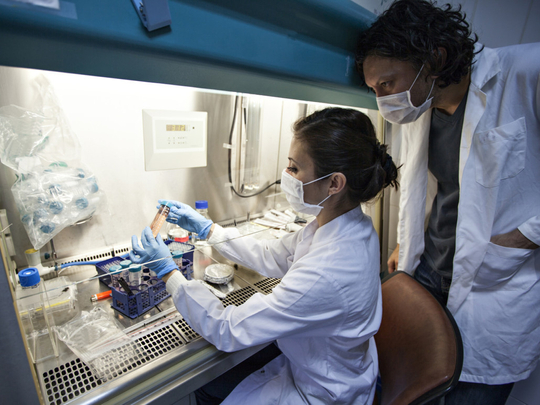
For the past 35 years one of the greatest challenges facing medical researchers has been how to find a cure for HIV, the virus that can lead to Aids, and to be able to at least reverse the debilitating and deadly effects of the disease. Certainly the development of the so-called cocktail of drugs and their widespread low-cost implementation has helped those infected to live longer if not entirely normal lives.
The virus itself carries not just a physical toll but also shoulders those who contract HIV with a heavy psychological burden. It remains a source of stigma and carries with it legal ramifications that challenge those infected with judicial, political and economic overtones. For decades, although the drug cocktail was readily available and those who lived high-risk lifestyles took measures to protect themselves, HIV and Aids remained looming in the background where a cure seemed to be an unachievable goal. For the medical community and a legion of researchers who sought to at least negate its debilitating effects or at best reverse the disease’s course even to a limited extent, the prospect of an outright cure seemed all but impossible. But while it is far too early to use the word “cure” in its most positive and widespread context, there certainly seems to be hope that the disease can be defeated down the road.
For the second recorded time and on two separate continents and in patients who have no relation to each other, the virus that causes Aids has been completely removed from their bodies. And the virus has remained absent for a matter of years, allowing doctors to say that the disease is in remission — much as a person who had cancer and underwent treatment can be said to be in remission and cancer-free. In the most recent case, the patient’s biological samples show an absence of the Aids virus for more than 18 months.
The medical treatment in this case resulted in HIV being removed from the patient’s system. The circumstances are similar to the case in the US 12 years ago where an HIV-positive patient underwent treatment, resulting in a similar outcome. Right now, it’s too early to say that researchers have found a cure. What can be said, however, is that the two separate cases offer a very big clue and point the way to that being the case far sooner that was originally contemplated by even the most optimistic of the medical research community.







